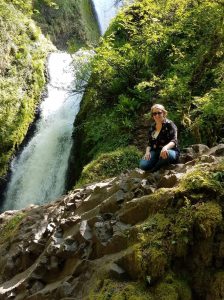Kelly is our Education and Outreach Fellow and we asked her to write a quick post to introduce herself:
I taught a course on the history of healthcare in America at Baruch College this past semester. As a bonus question on their final exam, I asked my students what they learned in the course. This class’s answers were overall fairly typical – marvel at the rapid expansion of medical innovation in the twentieth century, outrage at past injustices in medical experimentation – but one student’s answer in particular piqued my interest. She wrote that she was surprised to learn that there is a history of medicine and healthcare (she had registered for the course at the last minute to fill a requirement). What she took away from the course, was an awareness that how we think about and treat disease, is informed by social and cultural factors – race, class, and gender – not only by scientific discoveries and technological innovations. She also wrote that she felt this material should be introduced to students at an earlier stage, perhaps during high school. As a teacher, those are the moments I live for: when a student realizes the relevance of historical context to their own daily life and sees a need to share it with others.
In my career to date, I have pursued projects in public history alongside my academic training. I have held positions as a docent at the Indiana Medical History Museum, as a historical walking tour guide in New York, and as an educator at the Museum of the City of New York. Each position required that I present difficult, sometimes contentious material to audiences ranging from school children to older adults, in an engaging, comprehensible manner. Mirroring the distinction between academic and public history, I pursue questions pertaining to the differentiation between expert and lay knowledge in my own research. My PhD dissertation, completed in summer 2018 at Stony Brook University, examined the adaptation of traditional Chinese medicine to the American medical marketplace during the mid-twentieth century. I engaged in such issues as the patient’s right to choose from therapies offered in a free medical marketplace, the authority of physicians to judge non-biomedical therapies as safe and effective, and the role of government to play referee in issues pertaining to health.
In short, understanding the divide between expert and general knowledge and finding ways to bridge that gap has become a sort of personal mission of mine. One way to do this, is to engage non-academics more directly in the study and creation of history, which is the reason why the Education & Outreach Fellowship appeals to me. My goal in this position, is to make the vast amount of materials in the Medical Heritage Library’s online collections more accessible to the public and to K-12 teachers – as well as to researchers – helping to bring the history of medicine to a broader audience. I am working to create digital exhibits that provide context and illuminate relationships between key sources on a given subject (first vaccination, then other topics including disability history, gender in the field of medicine, and others). As I have often told my students, everything has a history. Making this history more accessible will, I feel, provide more nuance in discussions of contemporary health issues.
Photo Caption: Jones at Bridal Veil Falls in the Columbia River Gorge, Oregon, on a recent trip. As with many things in life, getting down from that rock was much more difficult than getting up it.






